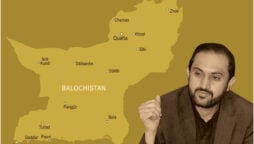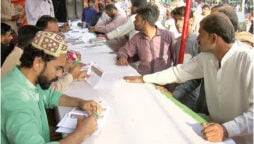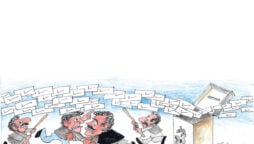
Lahore’s Environmental Tragedy
Once known as the city of gardens, Lahore’s atmosphere over the past four decades has become toxic for its residents
Recently, after the completion of over a 30-year-long career in Pakistan Foreign Service, I shifted back to my native town Lahore. I am, however, shocked at the intensity of smog covering the city’s entire atmosphere during these early winter days. It is obvious that the situation will continue to worsen as the winter season advances in the coming days and weeks.
I remember that 1970 — about more than 52 years ago — when we were receiving our school and college education in Lahore, fog used to set in its urban and rural areas particularly during the late and early mornings and then it swiftly faded away as the Sun rose, clearing the foggy haze within a couple of hours, and making the rest of the day clear and sunny, if it was not cloudy.
The fog in Punjab’s plain areas particularly in the river basins has been a traditional but normal climatic phenomenon also seen in the other parts of the World.
But this smog in Lahore or in the other cities in its vicinity is a manifestation of a grave man-made climate disaster. For the past few years now, Lahore during this phase of winter is ranked as the most polluted city in the World in terms of Air Quality Index. As a result, the atmosphere of the city remains black and gloomy for most of the day. A large segment of the population gets seriously affected by lungs-related disorder, and many other respiratory diseases. One could observe blackening of things in one’s courtyard, for instance, on the washing lines.
The greenery also gets a blackish dusty tinge. Such a toxic environment becomes a real threat to the children and the aged or those suffering from other ailments reducing their immunity.
Unfortunately, the presence and effects of smog in Lahore and around have continued to aggravate for the past several years. More strikingly, the smog which is gripping Lahore today can in future expand itself to some other leading
Pakistani cities too, particularly in the province of Punjab.
Undoubtedly, this state of affairs is due to the perpetual inertia and ignorance of the relevant population and the concerned authorities for their poor planning and management of major cities as well as rural areas of the country.
All the environment experts agree that smog clouds around Lahore’s populated parts are caused by unplanned population growth and resulting proliferation of automobiles and industry in and around the city.
The reliance on data for dealing with such challenges is of utmost importance.
Data doesn’t lie or mislead; it rather helps present a factual picture. The real underlying issue once again is the country’s overpopulation, which continues to grow in unmanageable proportions.
In the case under examination, Lahore’s population in 1980 was around 2.9 million, while today it stands at around 15 million. It should be simply shocking that the population of the provincial capital of Punjab has grown more than five times in the past 40 years. Additionally, Lahore’s suburban and rural areas tend to practically become part of Lahore exacerbating ecological pressures.
The biggest contributor to increasing pollution in Lahore is the unbridled increase in the number of automobiles in the city over the past decades. According to the Motor Registration Authority, the total number of automobiles in Lahore city in 1980 was slightly over 70,000 vehicles. In 2005, this number increased to 1.2 million vehicles. But astonishingly at present Lahore’s roads are plying with more than 6.2 million auto-vehicles, which includes 4.2 million motor bikes. The state’s incapacity in this respect is indicated by the fact that Lahore’s public transport system has completely faded out except one route of metro bus and the Orange Train, which are totally inadequate compared to Lahore’s mass-transit needs.
Another leading factor in aggravating Lahore’s environmental disaster is the mushrooming of housing societies at expense of the fertile agricultural land around the city. As a result of this concrete construction Lahore has been, and is, fast expanding in all directions and average daily temperature of Lahore significantly increased over the past few years. Once known as the city of gardens, it now lacks greenery, trees and parks for its inhabitants.
Since the independence of Pakistan, Lahore has been hosting many key industries.
Initially, the provincial authorities had designated industrial zones on the outskirts such as Kot Lakhpat or Badami Bagh for factories and production units. But in the past two decades the city’s growth and expansion took place without any regulatory controls, resulting in the industrial and production units being now located in the densely populated areas.
These industrial or manufacturing units emit hazardous gases without any environmental control and are causing substantial degradation of Lahore’s air quality index.
Given this disappointing situation, it is a matter of serious concern for Pakistan’s society that the authorities and institutions responsible for combating environmental degradation remain dangerously oblivious to the intensity of the looming disaster. Environment protection department or agencies of the Punjab government seem clueless as to how to effectively deal with this threat. The provincial authorities have only come up with cosmetic measures like closing schools and some private firms opting for three days per week.
The crisis is, however, much larger and requires short-term measures as well as long-term strategies not only for dealing with the symptoms, but curing its real causes. It is also important to take cognizance that the environmental threat is not confined to only Lahore, but in fact air quality index of many cities, including Pakistan’s largest city and commercial hub Karachi are within the dangerous limits. Therefore, what Pakistan needs is a comprehensive environmental policy for short- and long-term, transcending from the federal structures to provincial authorities to the city and municipal administrations.
The policy should include:
- Setting targets for population, its distribution into urban and rural areas through 10-year plans up to the turn of next century, and specifying ways of achieving and monitoring these targets.
- Mass transport systems for major cities, towns and villages should be developed and implemented without further delay. The transport patterns in vogue currently are unsustainable now.
- Electric vehicles should be incentivized. All the public transport switches to electricity. In the intervening period, environmental controls on vehicles like euro-zone specifications should be imposed in a phased manner.
- Industrial policy should ensure special industrial zones outside populated areas with adequate facilities and amenities of life. The emissions of hazardous gases from industrial units should be monitored and kept under the relevant international standards.
- The proliferation of real estate and housing authorities, using rural and agricultural lands should be prohibited through legislation so that investment of domestic and foreign resources should divert to productive businesses and not speculative real estate markets.
To some, this may sound ambitious and idealistic. But not attending to the environmental challenges and addressing the underlying anomalies and malpractices in our social and economic planning would seriously damage our future generations.
Catch all the National Nerve News, Breaking News Event and Latest News Updates on The BOL News
Download The BOL News App to get the Daily News Update & Live News.












 Read the complete story text.
Read the complete story text. Listen to audio of the story.
Listen to audio of the story.